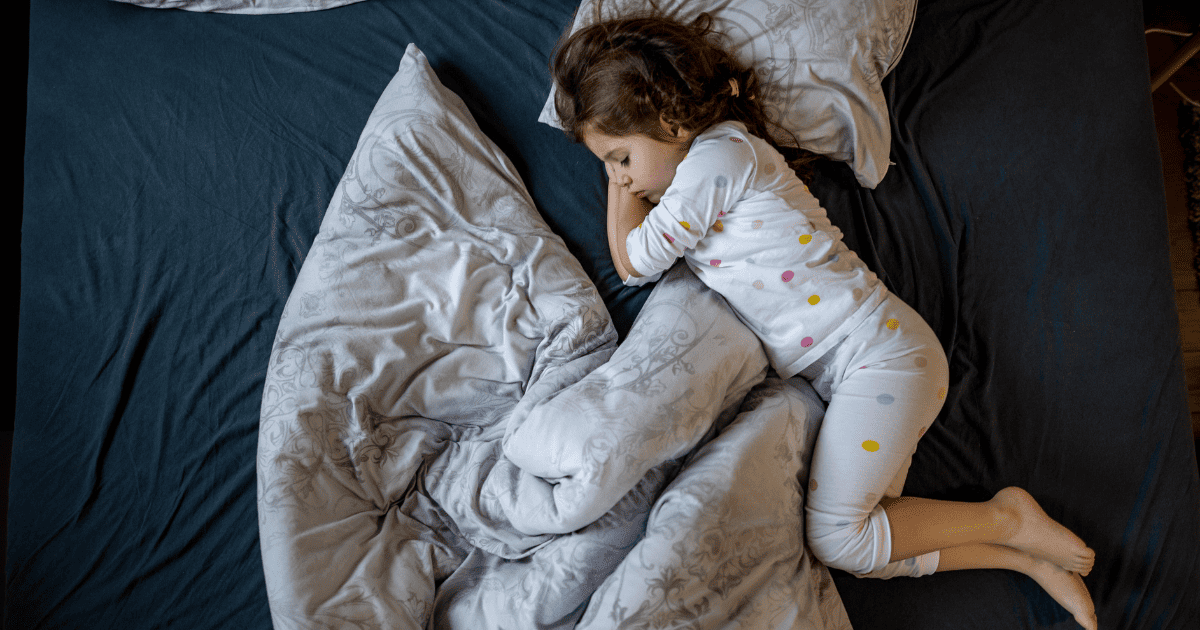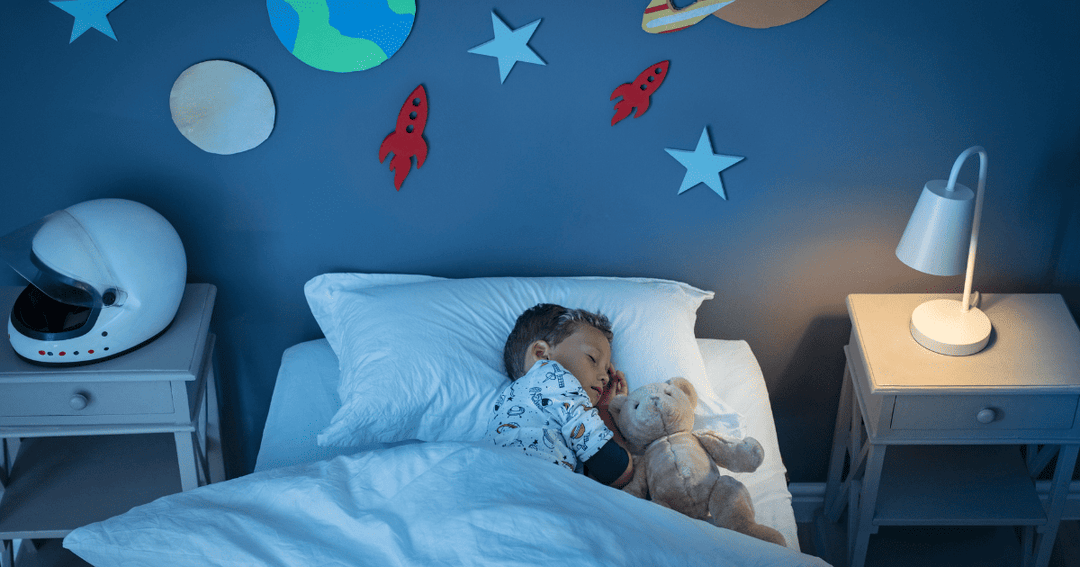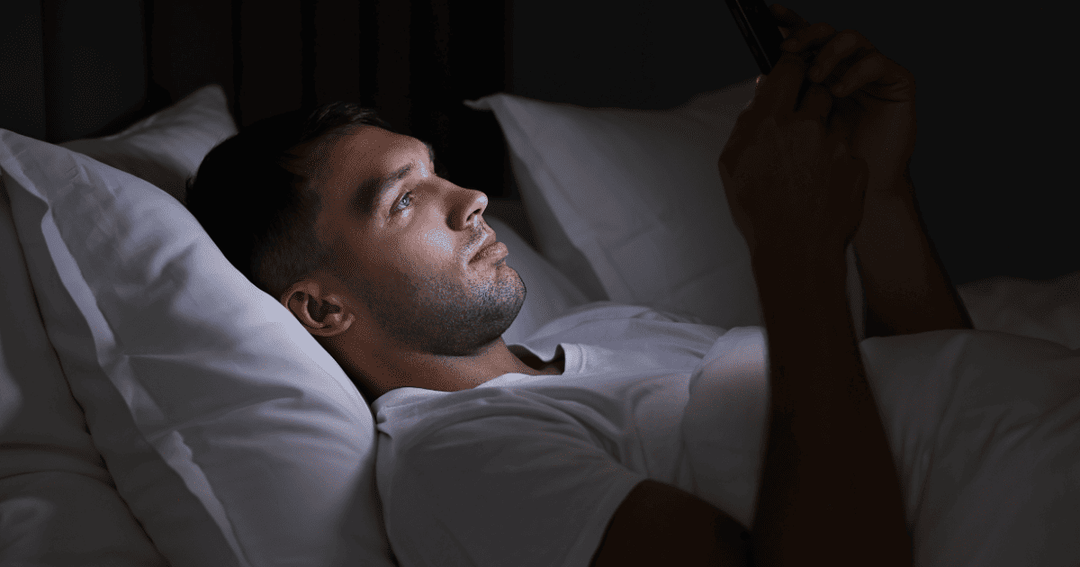Sleep and Children: Everything Parents Need to Know

As a parent, you've probably dealt with bedtime battles, night wakings, or a child who just won't fall asleep. Sleep challenges are common in childhood, but it can be hard to know what's normal and what needs attention.
The CDC reports that more than one in three American children don't get adequate sleep for their age. Sleep problems can affect behavior, school performance, and health.
This guide covers what you need to know about your child's sleep, common challenges, and practical solutions you can try at home.
Why is sleep so important for your child’s development?
Sleep does more than help your child feel rested. It plays a crucial role in your child's overall development.
Physical growth and health
During deep sleep, your child’s body releases growth hormone, which is essential for healthy physical development [2]. Consistently inadequate sleep—especially over longer periods—can contribute to slower physical growth, particularly in children with other health risks.
Getting enough sleep also strengthens the immune system. Well-rested children get sick less often and usually recover more quickly when they do catch something.
Brain development and learning
During sleep, your child’s brain is hard at work. Both deep and REM sleep are crucial for strengthening neural connections and helping the brain process and store the day’s experiences—a process known as memory consolidation.
Children who consistently get enough good-quality sleep [3]:
-
Pay better attention in class
-
Remember what they learn more effectively
-
Solve problems more easily
-
Perform better academically overall
-
Make better decisions
Overall, quality sleep supports essential cognitive functions such as critical thinking, focus, and decision-making skills
Emotional regulation
Sleep has a major impact on your child’s mood and behavior. Well-rested kids can manage stress more effectively, handle their emotions better, and get along better with others.
When children don’t get enough sleep, common signs include:
-
More meltdowns and tantrums
-
Increased irritability
-
Difficulty controlling emotions and impulses
-
More conflicts with friends and siblings
-
Problems following rules and routines
Getting enough sleep helps your child be more emotionally strong, develop better social skills, and manage daily challenges more effectively.
Also Read: Why Sleep Deprivation Can Lead to Serious Health Issues
How does your child’s sleep change as they grow?
Your child’s sleep needs and patterns change dramatically from birth through the teenage years. Each stage has its own characteristics and unique challenges.
Babies and toddlers (0–2 years)
Newborns need about 14–17 hours of sleep each day, but their sleep is spread throughout the 24-hour period as they don’t yet follow a day-night pattern. Their internal clock, or circadian rhythm, develops gradually over the first few months.
By 3–6 months, most babies begin sleeping for longer stretches at night as their body clock matures.
Toddlers need 11–14 hours of sleep in every 24 hours, including daytime naps, and typically develop more predictable sleep and wake schedules by the end of the second year.
Preschoolers (3-5 years)
Preschoolers need 10–13 hours of sleep per day, including naps if they still take them. During this stage, most children gradually stop napping, with all or most of their sleep moving to nighttime hours by age 5 or 6.
At this age, sleep patterns become more consistent, with longer stretches of deep sleep through the night. This is also when many kids start to face new sleep challenges, like being afraid of the dark or resisting bedtime—both of which are normal for this age.
School-age children (6-12 years)
School-age kids need 9–12 hours of sleep each night. As academic demands and after-school activities increase, it’s easy for bedtime routines to slip.
Sleep plays a big role in classroom performance and behavior. Several studies show that children who routinely get less sleep are significantly more likely to develop symptoms of hyperactivity, impulsivity, and attention problems compared to peers who get enough rest. For example, a 2018 study found that kids who regularly slept less than recommended nearly doubled their risk for attention and learning difficulties [4].
Teenagers (13-18 years)
Teenagers need 8–10 hours of sleep per night, but their internal clock naturally shifts later during puberty. This biological change—called a delayed sleep phase—means teens often feel more awake and active in the evening and prefer to sleep in later.
Unfortunately, most teens don’t get enough sleep. A 2023 CDC report found that only about one in four U.S. high school students get the recommended eight hours of sleep on school nights. Early school start times, combined with these biological shifts, make it even harder for teens to meet their sleep needs.
What are the most common sleep challenges children face?
You’ve probably encountered a mix of sleep issues over the years—some are just temporary phases, while others may need more attention.
Bedtime resistance and stalling
Many children resist going to bed and use a variety of stalling tactics, such as:
-
Requesting water or extra bathroom trips
-
Complaining, “I’m not tired”
-
Asking for another story, song, or hug
-
Suddenly remembering something important to share
These behaviors are common and can be caused by separation anxiety, excitement about the next day, or simply not feeling sleepy at the set bedtime [5]. Bedtime struggles often peak during preschool and early childhood, and are a leading reason why parents seek sleep advice.
Night wakings and early mornings
Frequent night wakings are common in infants, toddlers, and even older children. They can happen for many reasons:
-
Growth spurts or developmental milestones
-
Environmental factors like noise, temperature, or light
-
Medical issues such as congestion or reflux
-
Learned sleep associations, like needing a parent present to fall back asleep
Some children also wake very early in the morning. This can be due to too much light in the bedroom, going to bed too early, or simply having a natural sleep-wake cycle that runs earlier than others.
Night wakings and early risings are especially common during periods of rapid development, or when children rely on a certain routine or parental presence to settle back to sleep.
Nightmares and night terrors
These two sleep disruptions are different, though both can be distressing:
Nightmares happen during REM sleep and wake children up feeling scared. Kids usually remember the frightening dream and need comfort and reassurance to fall back asleep. Nightmares are more common in the second half of the night.
Night terrors occur during deep (non-REM) sleep, usually within a few hours after falling asleep. Children may scream, thrash, or appear terrified, but they’re actually still asleep and usually don’t remember the episode the next day. Night terrors are typically more unsettling for parents than for the child.
Children who have night terrors in early childhood are at increased risk for certain sleep disorders later—studies show as many as one-third may go on to develop sleepwalking [8].
Both nightmares and night terrors are common childhood experiences, but they have different triggers and management needs.
Sleep disorders that affect children
Several sleep disorders can significantly disrupt children’s rest and daily functioning:
Childhood insomnia: Also called pediatric insomnia, this is when a child has ongoing difficulty falling asleep, staying asleep, or waking up too early—despite having enough opportunity for sleep. Unlike adults with insomnia who usually feel tired and sluggish during the day, children often show different signs: they may become hyperactive, inattentive, or irritable as a result of not getting enough sleep.
Sleep apnea: Also called pediatric obstructive sleep apnea (OSA), this condition causes your child’s breathing to repeatedly stop and start during sleep. You may notice loud snoring, frequent gasping or choking sounds, or actual pauses in their breathing overnight. Pediatric OSA affects about 1–4% of children [6].
Restless leg syndrome: Also called pediatric restless legs syndrome (RLS), this condition causes uncomfortable sensations in the legs and an irresistible urge to move them—especially when lying down or at night. Children might describe these feelings as crawling, tingling, or “creepy-crawly” sensations. Pediatric RLS often goes underdiagnosed but is estimated to affect about 2–4% of children [7]. Kids may say they have to move their legs to make the unpleasant feelings go away, particularly at bedtime.
Sleepwalking: Sleepwalking is much more common in childhood than in adulthood. Episodes typically occur during deep sleep—often in the first part of the night—and most frequently peak between ages 4 and 12. About 5% of children are currently affected, with up to 29% experiencing sleepwalking at some point in childhood. Kids with a family history of sleepwalking are more likely to experience it themselves [8].
Delayed sleep phase syndrome: This circadian rhythm disorder is most common in teenagers. It causes the sleep-wake cycle to be significantly delayed, so teens can’t fall asleep until very late at night and struggle to wake up for school or morning activities. Delayed sleep phase syndrome affects an estimated 7–16% of adolescents [9].
How ADHD and autism affect sleep
Many kids with ADHD or autism face unique sleep challenges that can make bedtime especially hard for families.
ADHD and sleep: If your child has ADHD, you'll likely notice they have trouble winding down at bedtime. Their brains stay active—a state called hyperarousal—which makes it hard to transition from daytime alertness to nighttime rest. Common sleep issues include bedtime resistance, increased time needed to fall asleep (sleep latency), restless sleep, greater night-to-night variability, racing thoughts, and early wake times.
The relationship between ADHD and sleep is bidirectional: poor sleep can worsen ADHD symptoms, and the hyperactivity or impulsivity of ADHD can, in turn, make sleep problems more likely.
Autism and sleep: If you have a child on the autism spectrum, you’re likely facing sleep challenges that affect 40–80% of children with autism [10]. Common sleep problems include very late bedtimes, frequent night wakings, shorter total sleep time, and sometimes early morning awakening. Many children with autism have internal clocks that function differently and may produce less natural melatonin, leading to delayed and disrupted sleep. Sensory sensitivities—to light, sound, touch (such as pajamas or sheets), and temperature—can also make bedtime especially difficult and uncomfortable.
These sleep issues often persist across development and can contribute to daytime irritability, attention problems, and other behavioral challenges.
What factors affect children's sleep quality?
Many different things can impact how well your child sleeps. Being aware of these factors helps you make changes that can improve their sleep.
Screen time and blue light
Electronic devices emit blue light that tricks the brain into thinking it’s daytime. This suppresses melatonin production and delays when your child feels sleepy—and children are even more sensitive to these circadian rhythm disruptions than adults.
The American Academy of Pediatrics recommends turning off screens at least one hour before bedtime. Even brief evening screen use can push sleep later and reduce overall sleep quality.
School schedules and timing
Most schools start between 7 and 8 AM, which means children often need to wake up before their internal clocks are ready. This is especially true—and more challenging—for teenagers, whose biology naturally shifts their sleep timing later during puberty.
This mismatch between school schedules and teens’ natural sleep patterns leads to higher rates of sleep deprivation, daytime sleepiness, and even mood problems among students.
Research shows that delaying school start times can directly improve both the amount and quality of sleep that teens get.
Stress and overscheduling
Children experience stress from many sources:
-
Academic pressure and homework load
-
Social situations with friends
-
Family conflicts or major changes
-
Packed schedules with little downtime
When kids don’t have enough time to relax and wind down before bed, their nervous systems stay activated—making it harder to fall asleep, reducing overall sleep quality, and shortening sleep duration.
Studies show that academic, social, and family stress, as well as overscheduling and lack of downtime, all contribute to sleep problems in children [11].
Medical conditions and medications
Various chronic health issues can disrupt sleep in children:
-
Asthma or allergies, which can cause breathing problems at night
-
Eczema or other skin conditions leading to itching and discomfort
-
Acid reflux, which often worsens when lying down
-
Medications (for ADHD, asthma, depression, and others) that have stimulating effects or other side effects impacting sleep
Chronic symptoms or the medications used to treat these conditions often cause nighttime discomfort, breathing difficulties, or sleep disruption.
Sleep environment
The bedroom setup plays a big role in sleep quality:
-
Room temperature: 65–72°F (18–22°C) works best for most children.
-
Light levels and darkness: Cool, dark rooms support melatonin production; blackout curtains can help. While darkness is best, some children may feel more comfortable with a small night light.
-
Noise: A quiet environment—free from disruptive noise inside or outside the home—improves sleep.
-
Mattress and pillow comfort: A comfortable bed is essential.
-
Clutter and distractions: Reducing clutter creates a calmer, less stimulating environment that helps kids settle down.
Creating a cool, dark, quiet, and comfortable space can significantly improve your child’s sleep quality.
Also Read: Non-Prescription Remedies for Better Sleep
How can you tell if your child has a sleep problem?
Sleep deprivation in children doesn’t always look like tiredness in adults. Instead of seeming drowsy or slow, kids may become more active, irritable, or emotional—sometimes even mistaking their sleepiness for behavioral problems like ADHD.
Here are key signs and symptoms to watch for
Behavior and mood changes
Watch for these signs that may signal your child isn’t getting enough sleep:
-
More irritability or emotional outbursts
-
Hyperactivity or trouble sitting still
-
Increased sensitivity to minor frustrations
-
More arguments with family members
-
Difficulty with transitions or daily routines
Sleep deprivation in children often leads to increased moodiness, poor impulse control, and behavioral challenges—sometimes mistaken for discipline problems or other conditions.
School and attention issues
Sleep problems often show up in academic performance:
-
Declining grades or test scores
-
Forgotten homework or assignments
-
Trouble following directions
-
Difficulty learning new things
Lack of sleep affects children’s attention, memory, and motivation—making it harder for them to stay focused, remember new information, and succeed in school.
Physical symptoms
Not getting enough sleep can affect your child’s physical health in several ways:
-
Getting sick more often (weaker immune system)
-
Taking longer to recover from illness
-
Frequent headaches or stomachaches
-
Changes in appetite
-
Slower growth or development
These symptoms are sometimes mistaken for other health issues, but sleep loss is a common underlying cause. The American Academy of Pediatrics estimates that sleep problems affect 25–50% of children and 40% of adolescents [12].
How can you help your child sleep better?
Most sleep problems can be improved with consistent routines and patience. As most parents know, building good sleep habits benefits not just your child, but the whole family.
Sleep tips by age
Babies (0-12 months)
-
Keep days bright and nights dark: Daylight during the day and dim or dark conditions at night help babies develop healthy circadian rhythms and sleeping patterns.
-
Put babies down awake (but drowsy): This teaches self-soothing and independent sleep skills, which can lead to fewer night wakings. That said, comforting or soothing your baby to sleep can still be developmentally normal, especially in the earliest months.
-
Handle nighttime needs quietly with minimal interaction: When you need to feed or change your baby at night, keep lights low and interaction gentle—this helps reinforce the difference between night and day and encourages your baby to return to sleep.
Toddlers (1-3 years)
-
Stick to consistent nap and bedtime schedules: A regular daily schedule for naps and nighttime sleep helps support a healthy body clock and makes bedtime less of a struggle.
-
Give toddlers some control over small choices: Let your toddler pick pajamas or choose a story—these little choices help them feel in control and more willing to cooperate.
-
Use positive reinforcement for good sleep behavior: Offer praise, sticker charts, or small rewards when your toddler follows bedtime rules or stays in bed. Positive reinforcement helps build better sleep habits in this age group.
School-age kids (4-12 years)
-
Set clear homework and screen time cutoffs: Limit homework and especially electronic device use well before bed. Too much stimulation or screen time in the evening can make it harder for kids to fall asleep and cut down on sleep quality.
-
Create a predictable wind-down routine: A consistent bedtime routine (like reading, gentle music, or quiet conversation) helps children transition more smoothly from daytime to nighttime, preventing bedtime struggles.
-
Make sure bedrooms are comfortable for sleep: Ensure your child’s bedroom is cool, quiet, and dark, with a comfortable mattress and pillow. This environment makes falling and staying asleep easier.
-
Limit caffeine from all sources, including chocolate: Avoid giving your child caffeine sources such as soda, tea, energy drinks, and chocolate—especially later in the day—as even small amounts can keep kids awake or disrupt sleep.
Teenagers (13+ years)
-
Focus on consistent wake times rather than rigid bedtimes: Teens’ natural sleep cycles shift later during puberty, so waking up at the same time each day helps stabilize their sleep pattern, even if bedtime varies.
-
Help them manage screen time in the evening: Encourage teens to limit the use of phones, computers, and other screens well before bed—excess evening screen time is strongly linked to trouble falling asleep and poorer sleep quality.
-
Support them in handling academic and social stress: High school can be stressful. Helping teens manage homework, activities, and peer stress not only eases their minds but also supports better, more restful sleep.
Setting up the bedroom for sleep
A consistent bedtime routine signals that sleep time is coming, but the bedroom environment also matters for a good night's sleep:
Keep it cool: Most children sleep best between 65–70°F.
Make it dark: Use blackout curtains or shades; for kids afraid of total darkness, a small nightlight is okay.
Reduce noise: White noise machines, fans, or soft earplugs (for older kids) can help with disruptive sounds.
Ensure comfort: Make sure mattresses provide good support, and involve your child in picking out cozy bedding.
Remove distractions: Keep toys, electronics, and stimulating objects out of the sleep space.
What else do I need to know?
Sleep is an absolute necessity for both adults and children. While sleep problems are common in childhood, most improve with consistent good sleep habits and time. Healthy sleep supports your child’s growth, mood, learning, and overall well-being.
If issues persist despite your best efforts for several weeks, or if sleep problems significantly affect your child’s daily life, talk with your pediatrician. They can check for underlying medical conditions or refer you to a sleep specialist if needed.
TRY Sip2Sleep® Childrens Today
Frequently Asked Questions
How long will your child's sleep problems last?
Most childhood sleep problems are temporary and improve within a few weeks of consistent routines. Sleep regressions during growth spurts or developmental leaps typically last 2–6 weeks. If you’re concerned about persistent sleep issues after several weeks, check in with your pediatrician.
Can your child catch up on sleep on weekends?
While extra weekend sleep can help a little, it can’t fully make up for sleep lost during the week. Sleeping in too late on weekends can also disrupt your child’s sleep schedule, making it harder to fall asleep on Sunday night and starting a cycle of poor sleep. To support better mood, learning, and health, try to keep weekend wake times within 1–2 hours of weekday routines.
When do most children stop napping?
Most children give up their afternoon nap between the ages of 3–5, though there’s a lot of individual variation. Some may still need occasional naps during this transition period. Signs it might be time to drop naps include difficulty falling asleep at naptime or trouble settling down at bedtime after a nap. You can replace regular naptime with a quiet rest period to help your child recharge.
Why do teenagers sleep so much on weekends?
Teenagers often use weekends to catch up on sleep debt from the school week. During puberty, their biological clocks shift later, making it hard to fall asleep early and leading to sleep deprivation with early school start times. Sleeping in on weekends is the body’s way of trying to recover from this chronic sleep loss, but large shifts in sleep timing can disrupt their natural rhythms and make Monday mornings even tougher.
Is melatonin safe for kids?
Melatonin is generally considered safe for children when used short-term and under a doctor’s guidance, especially for certain sleep problems. Long-term effects are not fully understood, and melatonin is not recommended for routine use in otherwise healthy children. Only use melatonin after discussing it with your pediatrician.
If you’re interested in natural alternatives, Sip2Sleep Children uses natural ingredients like tart cherry extract and Rafuma leaf—both of which have shown sleep support benefits in adult studies, though research in children is still limited. Always consult your pediatrician before starting any new supplement for your child.
References:
-
Centers for Disease Control and Prevention. (2024, November 1). FastStats: Sleep in children. https://www.cdc.gov/sleep/data-research/facts-stats/children-sleep-facts-and-stats.html
-
Cacciari E, Coccagna G, Cicognani A, Pirazzoli P, Gallassi R, Farneti P, Bernardi F, Zappulla F, Gobbi G, Verucchi P. Growth hormone release during sleep in growth-retarded children with normal response to pharmacological tests. Arch Dis Child. 1978 Jun;53(6):487-90. doi: 10.1136/adc.53.6.487. PMID: 686775; PMCID: PMC1544940.
-
Diaz A, Berger R, Valiente C, Eisenberg N, VanSchyndel S, Tao C, Spinrad TL, Doane LD, Thompson MS, Silva KM, Southworth J. Children's Sleep and Academic Achievement: The Moderating Role of Effortful Control. Int J Behav Dev. 2017 Mar;41(2):275-284. doi: 10.1177/0165025416635284. Epub 2016 Mar 1. PMID: 28255190; PMCID: PMC5327793.
-
Bayes DM, Bullock B. Sleep Problems in School Aged Children: A Common Process across Internalising and Externalising Behaviours? Clocks Sleep. 2019 Dec 20;2(1):7-18. doi: 10.3390/clockssleep2010002. PMID: 33089186; PMCID: PMC7445839.
-
Freeman KA. Treating bed time resistance with the bed time pass: a systematic replication and component analysis with 3-year-olds. J Appl Behav Anal. 2006 Winter;39(4):423-8. doi: 10.1901/jaba.2006.34-05. PMID: 17236339; PMCID: PMC1702334.
-
Lumeng JC, Chervin RD. Epidemiology of pediatric obstructive sleep apnea. Proc Am Thorac Soc. 2008 Feb 15;5(2):242-52. doi: 10.1513/pats.200708-135MG. PMID: 18250218; PMCID: PMC2645255.
-
Picchietti D, Allen RP, Walters AS, Davidson JE, Myers A, Ferini-Strambi L. Restless legs syndrome: prevalence and impact in children and adolescents--the Peds REST study. Pediatrics. 2007 Aug;120(2):253-66. doi: 10.1542/peds.2006-2767. PMID: 17671050.
-
Petit D, Pennestri M, Paquet J, et al. Childhood Sleepwalking and Sleep Terrors: A Longitudinal Study of Prevalence and Familial Aggregation. JAMA Pediatr. 2015;169(7):653–658. doi:10.1001/jamapediatrics.2015.127
-
Gradisar M, Crowley SJ. Delayed sleep phase disorder in youth. Curr Opin Psychiatry. 2013 Nov;26(6):580-5. doi: 10.1097/YCO.0b013e328365a1d4. PMID: 24060912; PMCID: PMC4142652.
-
Sidhu N, Wong Z, Bennett AE, Souders MC. Sleep Problems in Autism Spectrum Disorder. Pediatr Clin North Am. 2024 Apr;71(2):253-268. doi: 10.1016/j.pcl.2024.01.006. Epub 2024 Jan 30. PMID: 38423719.
-
Deng Y, Cherian J, Khan NUN, Kumari K, Sial MS, Comite U, Gavurova B, Popp J. Family and Academic Stress and Their Impact on Students' Depression Level and Academic Performance. Front Psychiatry. 2022 Jun 16;13:869337. doi: 10.3389/fpsyt.2022.869337. PMID: 35782431; PMCID: PMC9243415.
-
Sumit Bhargava; Diagnosis and Management of Common Sleep Problems in Children. Pediatr Rev March 2011; 32 (3): 91–99. https://doi.org/10.1542/pir.32-3-91






